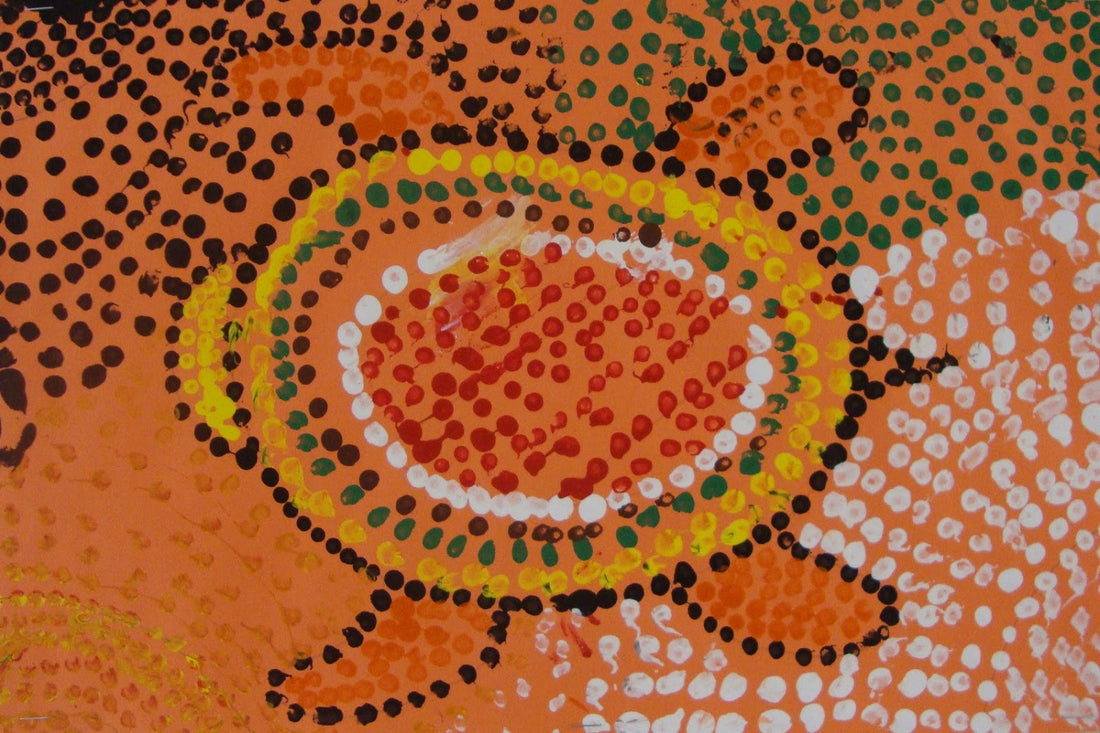
Aboriginal Art and Meaning of Some Aboriginal Symbols
Share
1. About Aboriginal Art
The ancestors of today's Aboriginal people populated the Australian continent about tens of thousands of years ago. Their culture is in many respects unique because, until the eighteenth century, they had limited contact with people outside Australia. One of the most striking manifestations of contemporary Aboriginal culture are the iconic dot paintings of the desert people. Dot paintings include many Aboriginal art symbols that convey meaning to the work. Before colonial times, Aboriginal culture was fully embedded in its natural environment. Aboriginal material culture revolved around practical and ritual objects. Craftsmen and women adorned spears, baskets, shields, ritual and ceremonial poles with culturally meaningful patterns. Aboriginals expressed their art with natural materials such as rocks, sand, wood, bark, beeswax, reeds and occasionally bodily fluids. The people of the Australian deserts traditionally expressed their art with sand drawings, painting their bodies, and the more enduring rock paintings and engravings.
Dot paintings are now internationally recognized as unique and integral to Australian Aboriginal Art. The simple dot style as well as cross hatching may be beautifully aesthetic to the eye but has a far more hidden meaning and deeper purpose; to disguise the sacred meanings behind the stories in the paintings.

How to make the Aboriginal Art?
Before Indigenous Australian art was ever put onto canvas the Aboriginal people would smooth over the soil to draw sacred designs which belonged to that particular ceremony. Body paint was also applied which held meanings connected to sacred rituals. These designs were outlined with circles and encircled with dots.
Uninitiated people never got to see these sacred designs since the soil would be smoothed over again and painted bodies would be washed. This was not possible with paintings.
Aboriginal artists abstracted their paintings to disguise the sacred designs so the real meanings could not be understood by Westerners.
2. The meaning of some Aboriginal Symbols2.1. Hunting & Tracking
Aboriginal people of the Central and Western Desert use a range of symbols that derive from their hunting and tracking background. This means that the marks left by animals and humans as track prints in the sand have come to represent those animals and people.
![]()
2.2. People
The U shape that is marked on the ground when a person sits cross legged on the earth has come to represent a human. The implements that they carry and put beside them define whether the U shape represents a male or female. A woman may have an oval-shaped coolamon bowl and a digging stick next to her, and this combination of symbols – looking like UOI – represents a woman with her hunting implements. A man may carry spears and possibly boomerangs, so his symbols may look like U || ( .

Where people come together is usually marked as a circle or a set of concentric circles. These can represent a campsite, a fireplace, a meeting place or a waterhole. Where people travel between a series of locations, this journey can be shown as parallel lines linking up between the circles.
2.3. Animals
Animals for the desert Aboriginal people are represented by the tracks they leave behind. An emu leaves a three- pointed V track as its footprint. Kangaroos leave a set of mirror-image tick shapes from its back paws with a long line between where its tail drags. A possum or other small marsupial leaves an E shape - a line with four marks coming out from the claw marks.

2.4. Clans
The ceremonial use of certain clan patterns to show that a person has links to a particular clan is used throughout Arnhem Land in the far north of Northern Territory. These patterns made of fine lines drawn in specific ochre colors can represent elements such as fire and water, and when combined with certain totemic animal designs, all signify which clan the owner belongs to. A person’s identity is closely linked to the symbols that they use, and this shows their relationship to the Dreaming story that gives their clan its Creation mythology.

Knowing the great pride of Australian about Aboriginal Art, we try our best to do research and make more products relating to Aboriginal symbols with a view to honoring Australian culture as well as spreading Dot Painting to others. Through our Aboriginal collection, you can see a great culture shown in hoodie, combo, or home products (bedding sheet, curtain, rug/mat…) . No matter who you are, an Australian or Aboriginal lover, even a person without knowledge about Dot Painting, you will love our products at first sight. So, don’t hesitate and pick something you love in our Aboriginal collection.
Don’t forget to apply the discount code LINH10 for 10% off.
Thanks for your time!